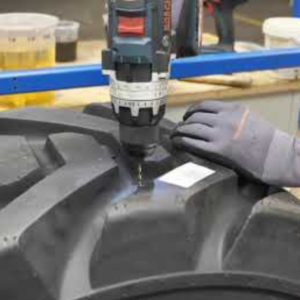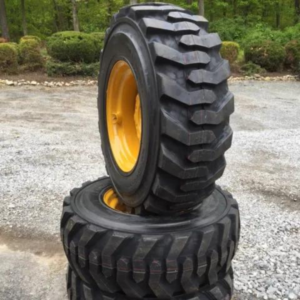Foam-filled tires are an interesting alternative to traditional pneumatic tires. Unlike standard air-filled tires, foam-filled tires are a popular alternative that provides several advantages. They don’t require inflation and are designed to remain solid over their entire lifespan. Many vehicle owners have also taken an interest in the foam filled tires DIY method, as they offer the convenience of customization and potential cost savings. However, it’s important to note that while foam-filled tires don’t go flat in the same way as air-filled tires, they can still experience issues over time.
 The short answer is yes, foam-filled tires can go flat. However, the key difference between a standard air-filled tire and a foam-filled tire is that when foam-filled tires start to lose their cushioning capabilities and become uncomfortable to ride on, they don’t necessarily actually “go flat” as you would expect a standard air-filled tire to do. Instead, the foam inside the tire slowly gets compressed over time and loses its ability to cushion your ride. This can cause wobbling or bumpy handling, which is a sign that the foam needs to be replaced or refilled.
The short answer is yes, foam-filled tires can go flat. However, the key difference between a standard air-filled tire and a foam-filled tire is that when foam-filled tires start to lose their cushioning capabilities and become uncomfortable to ride on, they don’t necessarily actually “go flat” as you would expect a standard air-filled tire to do. Instead, the foam inside the tire slowly gets compressed over time and loses its ability to cushion your ride. This can cause wobbling or bumpy handling, which is a sign that the foam needs to be replaced or refilled.
Foam-filled tires are typically more durable than standard air-filled tires and don’t require inflation, making them a great option for flat-proofing your vehicle. But as with any tire, it is important to regularly check the condition of your foam-filled tires in order to ensure that they remain safe and comfortable to ride on. If you find that the foam is becoming too compressed, it’s time to replace or refill the tire.
Yes, foam-filled tires can go flat with time, but not in the same way as a standard air-filled tire. As foam slowly compresses over time and starts to lose its cushioning capabilities, it will become uncomfortable to ride on. If you notice that the tire is wobbling or handling is bumpy, it’s time to replace or refill the foam to keep your vehicle flat-proofed. Be sure to regularly check the condition of your foam-filled tires in order to maintain a safe and comfortable ride.
What Is Foam Filling?
 Foam filling is the process of injecting a special polyurethane foam into a tire’s inner cavity to solidify it and reduce the risk of punctures and blowouts. The foam can be injected either before or after the tire is onto a wheel. Once the foam has been injected, it completely seals off the inner cavity from the air or any other type of gasses that could leak out.
Foam filling is the process of injecting a special polyurethane foam into a tire’s inner cavity to solidify it and reduce the risk of punctures and blowouts. The foam can be injected either before or after the tire is onto a wheel. Once the foam has been injected, it completely seals off the inner cavity from the air or any other type of gasses that could leak out.
Conclusion
Foam-filled tires are an interesting alternative to standard pneumatic tires. They don’t require inflation like regular tires and are designed to remain solid over their entire lifespan. However, it is possible for them to go flat — although not in the same way as a standard air-filled tire. The foam inside the tire can become compromised and lose its ability to seal off the inner cavity, allowing air or other gases to escape. If this happens, it’s usually due to age, wear-and-tear, extreme temperatures, improper installation, or another kind of damage. To ensure your foam-filled tires stay inflated and in good condition for as long as possible, it’s important to follow the manufacturer’s instructions and maintain them regularly.

